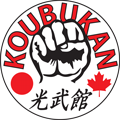
Koubukan Goju-Ryu Karatedo

The basis of Koubukan was deeply influenced by Hanshi Hayashi’s father, Akria Hayashi, who practiced under Sensei (Instructor) Yasuhiro Konishi—founder of Shindo Jinen-Ryu and pupil of Chojun Miyagi, Gichin Funakoshi, Kenwa Mabuni, Choki Motobu, and Morihei Ueshiba—establishing his own dojo in 1957 where young Yutaka Hayashi began his Karate training. Under the direction of Hanshi Hayashi, Koubukan Gojuryu Karatedo demonstrates the impressive lineage established from previous Gojuryu masters and grounds its core teachings on guidelines established by the Japan Karatedo Federation. Today, Koubukan Gojuryu has affiliated dojos in both Japan and Canada.
BKJJ Traditional Training Principals
Kihon (Basics):
Stances (Tachiwaza): Practicing fundamental stances helps develop balance, stability, and strength.
Strikes (Tsuki), Kicks (Keri), and Blocks (Uke): Basic techniques form the foundation of karate. Repetition is crucial for mastering these movements.
Kata (Forms):
Pre-arranged Patterns: Katas are choreographed sequences of movements that simulate various combat scenarios. They help practitioners refine their techniques, improve timing, and develop muscle memory.
Bunkai: Understanding the practical applications (bunkai) of each movement within a kata is essential for effective self-defense.
Kumite (Sparring):
Controlled Sparring: Students engage in controlled sparring to apply techniques learned in kihon and kata in a dynamic, responsive setting.
Point Sparring or Continuous Sparring: Rules may vary, but the emphasis is often on precision, timing, and control rather than brute force.
Etiquette and Respect:
Rei (Bow): Bowing is a sign of respect and is commonly used at the beginning and end of class, as well as when entering or leaving the training area.
Dojo Kun (Code of Ethics): Our dojo (our club) has a set of guiding principles that students need to learn to remind them of the moral and ethical aspects of their training.
Philosophy and Character Development:
Bushido: The way of the warrior, which includes principles like courage, integrity, respect, and compassion.
Character Building: Traditional karate places importance on developing not only physical skills but also mental and moral virtues.
Meditation and Breathing:
Mokuso (Silent Meditation): Practices to develop focus, concentration, and mental clarity.
Ranking System:
Kyū and Dan System: Students progress through various ranks, symbolized by different colored belts (kyū ranks) until reaching black belt (dan ranks). Each rank represents a level of proficiency and understanding.
Physical Conditioning:
Strength and Flexibility: Exercises to improve physical fitness and reduce the risk of injury.
Continuous Learning and Improvement:
Lifelong Journey: Traditional karate is seen as a lifelong journey of self-discovery, self-improvement, and continuous learning.
Lineage
Hanshi Yutaka Hayashi 9th Dan Koubukan Goju-Ryu
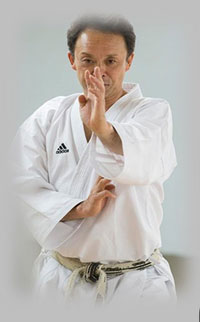
Hanshi Yutaka Hayashi received his initial training from his father, Akira Hayashi until 1982. Hanshi Hayashi then began training under Katsutoshi Ishihara, founder of Shoseikan Gojuryu. After years of hard work and dedication within the federation, Hayashi became one of Katsutoshi Ishihara’s top Shihans (Master Instructors) and was given the responsibility of overseeing the pedagogy of all globally affiliated dojos. In 2016, Hanshi Hayashi decided to branch off on his own in order to pursue his vision of Goju-Ryu Karatedo—Koubukan was born and its Hombu dojo was constructed. Koubukan was founded with a clear vision in mind: uniting the traditional way of Gojuryu with natural body movement.
Kancho Ishihara
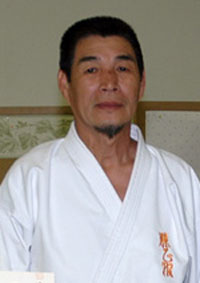
Kancho Ishihara was born in Chiba Prefecture in Japan. He started learning Karate in 1963 under the direction of Gogen Yamaguchi, one of the well-known Karatedoka of the World. Through natural talent, discipline and hard work, Kancho Ishihara acheived Blackbelt 3rd and entitled as Shidoin under All-Japan Karate-do Goju Kai in 1968. In the same year, he established the first Shoseikan dojo in his hometown, Chiba, Japan. Since 1971, Kancho had travelled around the World promoting Goju-Ryu Karate. The fellowship includes the countries of South Africa, Dubai, India, Hong Kong, Taiwan, United States and Canada. Today, there are over 50 Shoseikan dojo around the World. http://www.shoseikan.com/katsutoshi-ishihara.html"
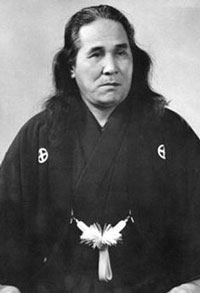
Jitsumi Gōgen Yamaguchi (山口剛玄; January 20, 1909 – May 20, 1989)
Jitsumi Gōgen Yamaguchi (also known as Gōgen Yamaguchi, was a Japanese martial artist and student of Gōjū-ryū Karate under Chōjun Miyagi.[4] He was one of the most well-known karate-dō masters from Japan and he founded the International Karate-dō Gōjū Kai Association.[5] From Wikipedia, the free encyclopedia
Chōjun Miyagi 宮城 長順 Born April 25, 1888 Naha, Okinawa Died October 8, 1953 (aged 65)
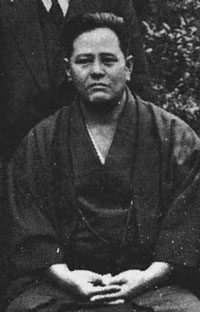
Okinawa Style Goju-ryu Teacher(s) Kanryo Higashionna, Ryuko Aragaki Rank Sōke, Founder of Goju-ryu, Kyoshi - Dai Nippon Butokukai Notable students Gogen Yamaguchi, Seiko Higa, Seikichi Toguchi, Tatsuo Shimabuku,[1] Ei'ichi Miyazato, Meitoku Yagi, Seigo Tada Chōjun Miyagi (宮城 長順 Miyagi Chōjun, April 25, 1888—October 8, 1953) was an Okinawan martial artist who founded the Gōjū-ryū school of karate by blending Okinawan and Chinese influences. From Wikipedia, the free encyclopedia
Higaonna Kanryō (東恩納 寛量 Higaonna Kanryō, March 10, 1853 – October 1915)
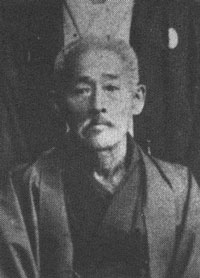
Higaonna Kanryō, also known as Higashionna West, was a Ryukyuan martial artist who founded a fighting style known at the time as Naha-te. He is recognized as one of the first students of Fujian White Crane Kung Fu masters, namely Ryū Ryū Ko, in the Fuzhou region of China who returned with those skills to Okinawa. His student, Chōjun Miyagi, would later found Gōjū ryū Karate.[2] From Wikipedia, the free encyclopedia.

Belt Levels & Ranks
At each belt level the student must learn a specific number of techniques and be tested on those techniques before he/she can move up to the next level. The time required for a student to advance from one belt level to the next will depend upon the number of times a student attends class in a month as well as the effort each student puts forth in training. For example, the average student attending three times per week could probably attain the rank of yellow belt in approximately three to six months. As the student advances in the ranks however the time in each rank will increase as the technical skills required become more demanding and challenging.
- 10th Kyu: Jukyu / White Belt
- 9th Kyu: Kukyu / White Belt 1 stripe
- 8th Kyu: Hachikyu / White Belt 2 stripes (Red Belt Children)
- 7th Kyu: Nanakyu / Yellow Belt
- 6th Kyu: Rokkyu / Orange Belt
- 5th Kyu: Gokyu / Green Belt
- 4th Kyu: Yonkyu / Blue Belt
- 3rd Kyu: Sankyu / Brown Belt
- 2nd Kyu: Nikkyu / Brown Belt 1 Stripes
- 1st Kyu: Ikkyu / Brown Belt 2 Stripes
- 1st Degree Black Belt (Shodan)
- 2nd Degree Black Belt (Nidan)
- 3rd Degree Black Belt (Sandan)
- 3rd Degree Black Belt (Sandan)
- 4th Degree Black Belt (Yondan)
- 5th Degree Black Belt (Godan)
- 6th Degree Black Belt (Rokudan)
- 7th Degree Black Belt ( Shichidan)
- 8th Degree Black Belt (Hanshi)
Nafudakake

Nafudakake (名札掛け, lit. "name-plate-rack") is a Japanese method of displaying all the names of the members in a group by collecting the names on individual plaques called nafuda (名札, "nametag") and hanging them together in a specialized case called kake (掛け, "rack").